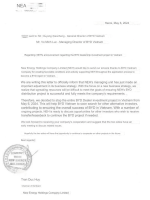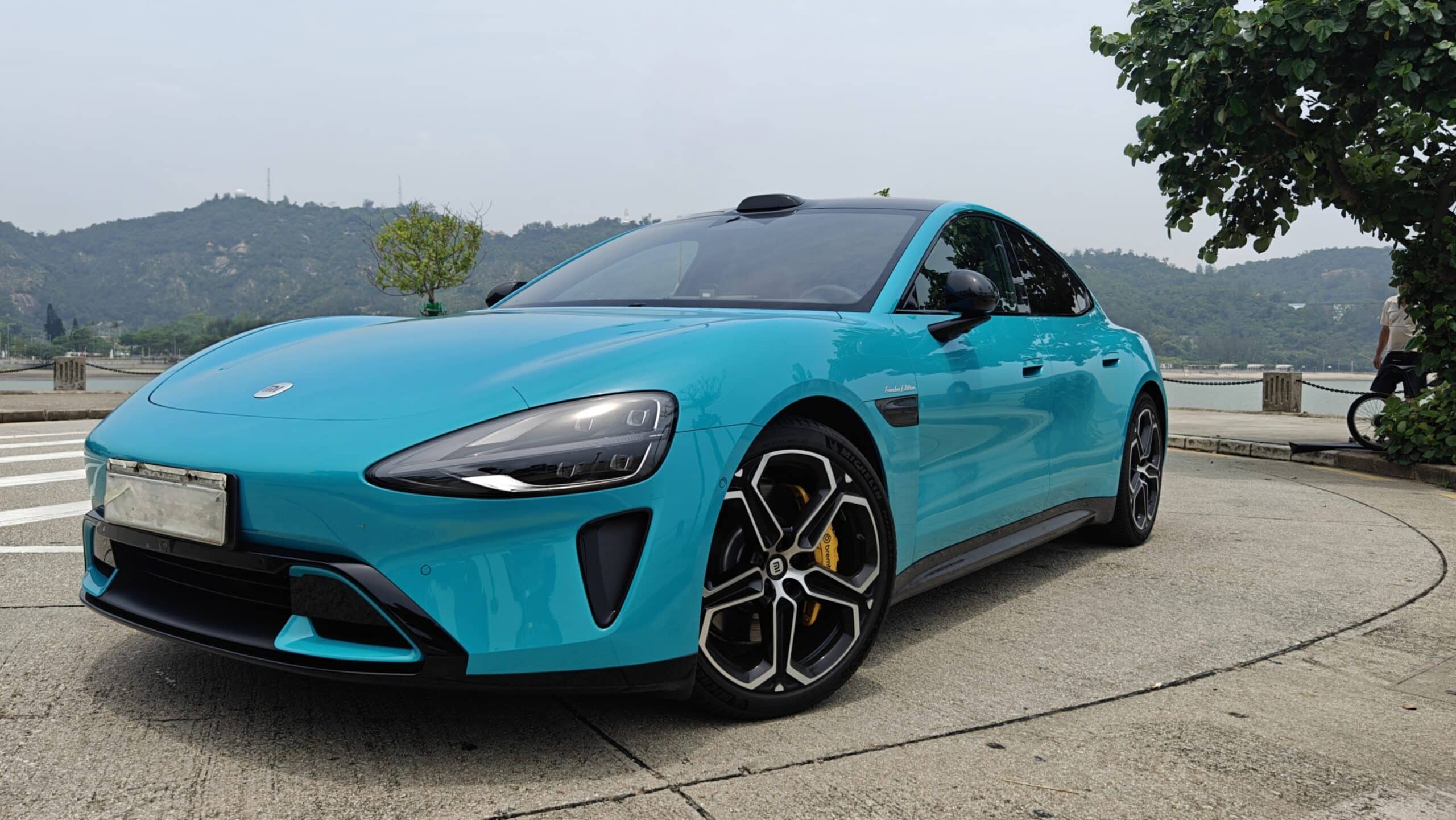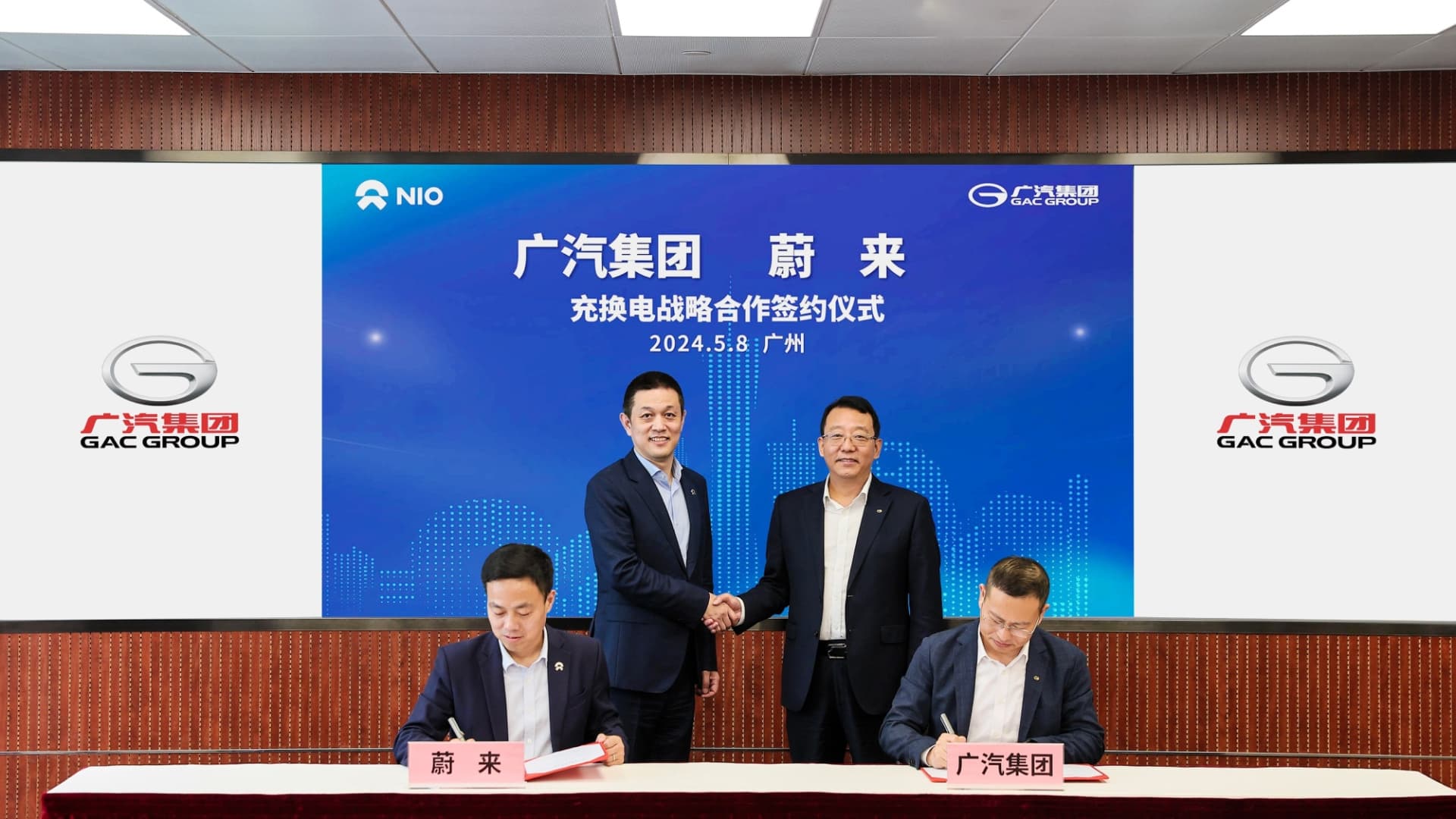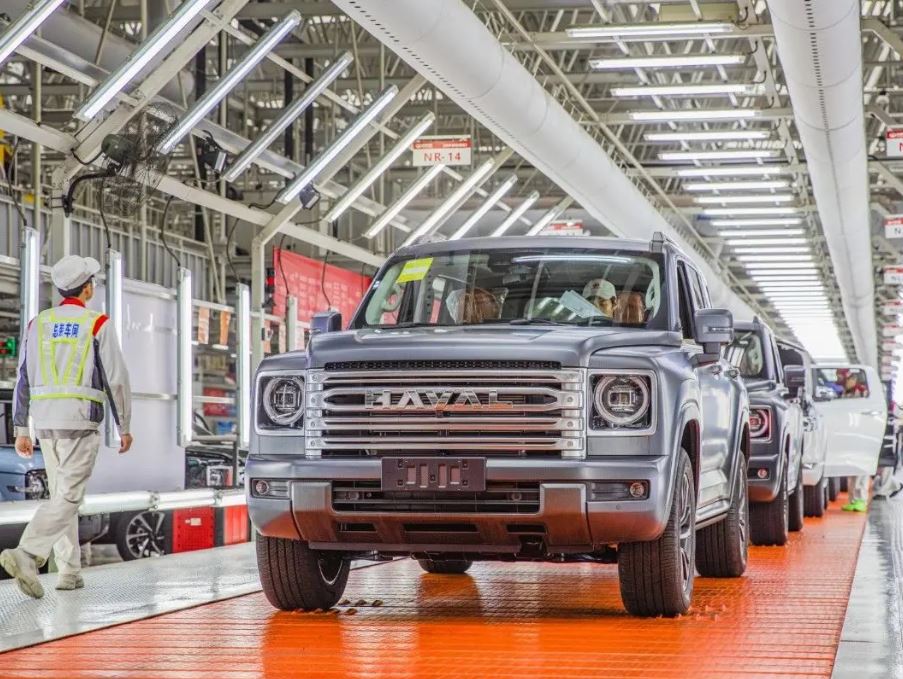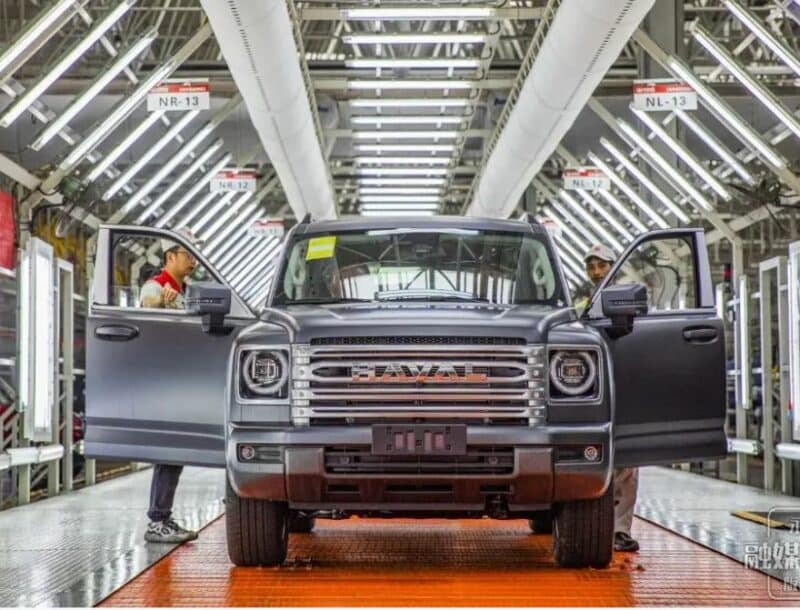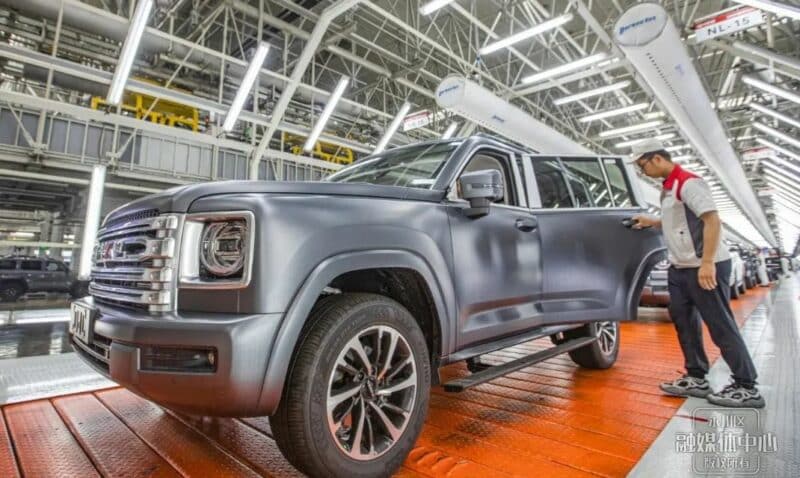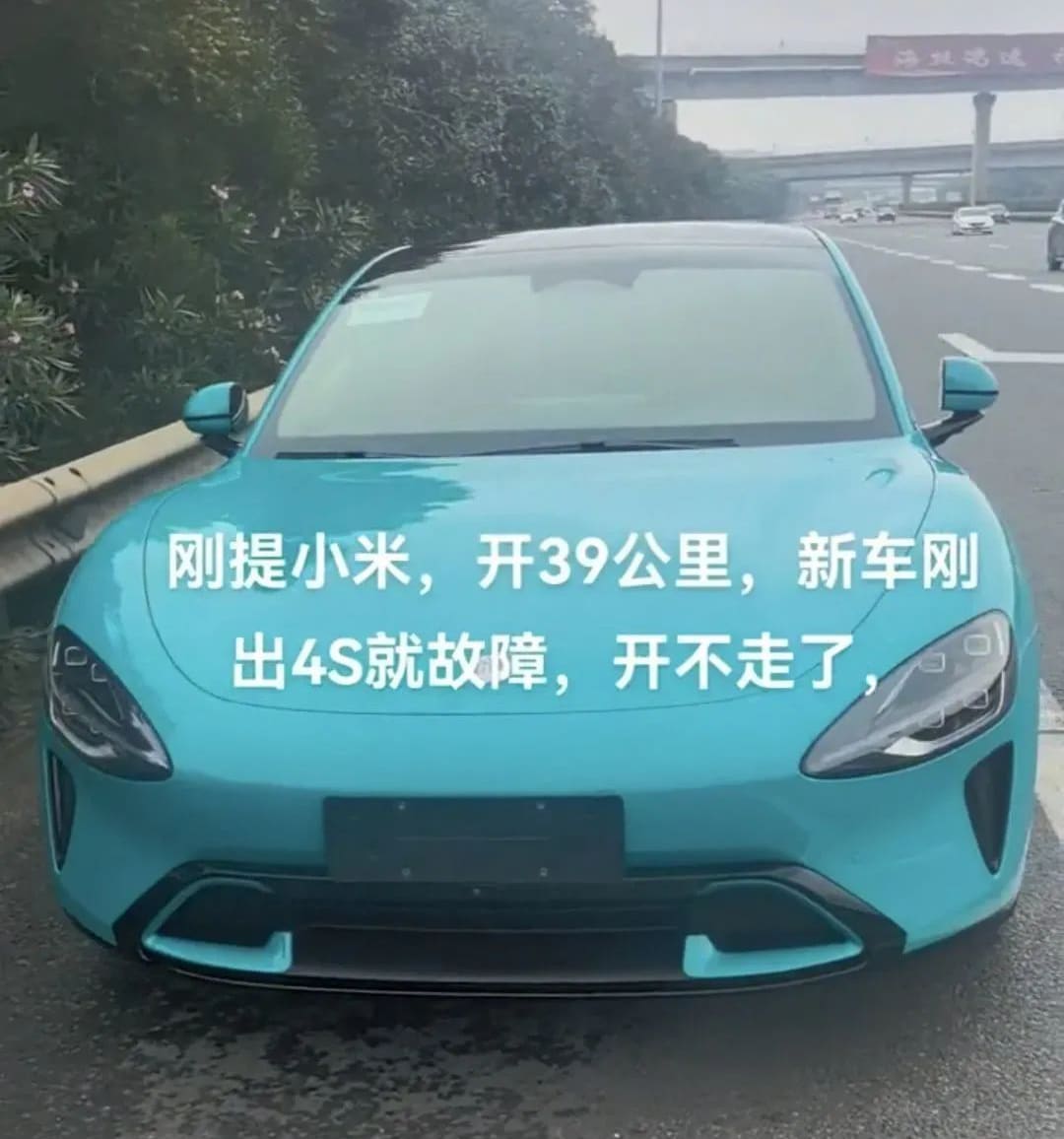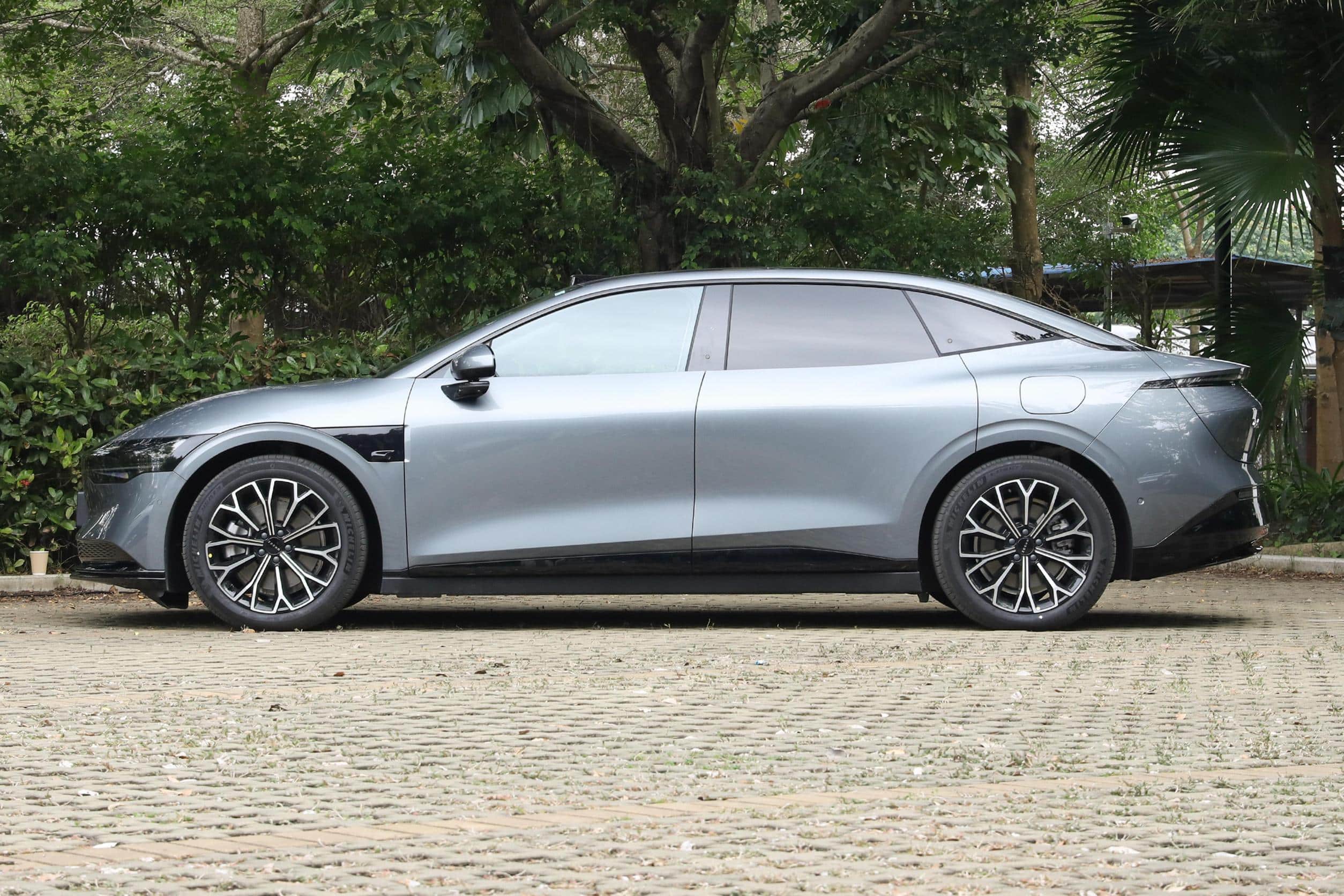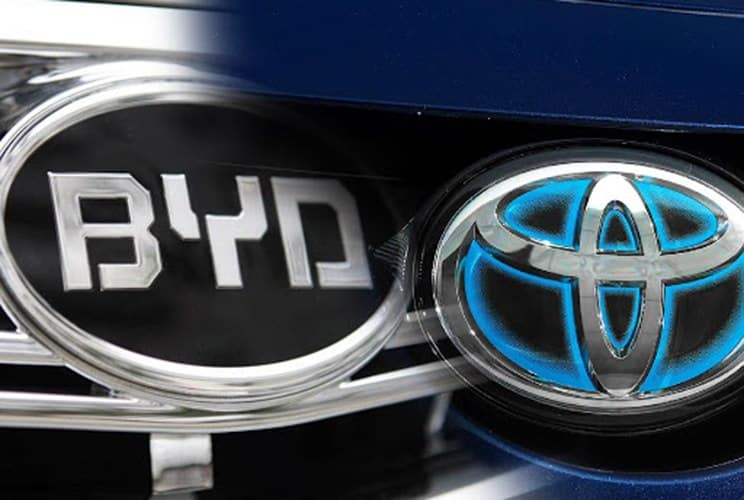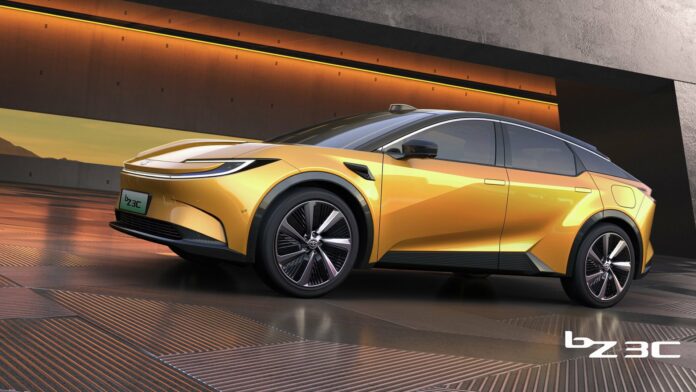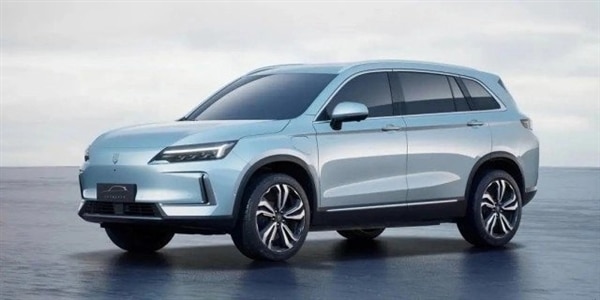Amateur or innovator? Xiaomi’s SU7 challenges both legacy and NEV automakers.

carnewschina.com
Test Drive | Xiaomi SU7 Max, watchout Model 3 Performance
Reading Time: 7 minutes
Adrian Leung
May 8, 2024
9

News like this to your inbox or phone?
Weekly summary to your inbox
I want this
Never miss and important news
Get Instant notification once the news is published.
Follow Us
Xiaomi launched the SU7, its first all-electric sports saloon, on 28 March. Just a little over a month after its initial launch, as of 30 April, the SU7 had secured lock-in orders (non-refundable deposits) of 88,063 units in China. Is the popularity of the SU7 caused by the irresistible charisma of Lei Jun, Xiaomi’s Chairman and CEO? Or is it the Taycan-inspired exterior design? Let’s take a closer look!
Booking for a test drive
As a commitment to CNC’s readers, I made a test drive reservation for a Xiaomi SU7 using WeChat despite the dealership being two and a half hours away in the mainland. The next day, a Xiaomi representative called to verify my booking by requesting my driver’s license. After sending her my details, she informed me that I could only ride as a passenger in the Xiaomi SU7 because I had obtained my driver’s license less than two years ago. Xiaomi mandates experienced drivers to test drive the SU7 to prevent inexperienced drivers from mishandling these high-powered cars. This company policy debunks rumors about the vehicle lacking traction control, causing accidents, which surfaced online after
clips of the SU7 crashing went viral.
My driver’s license for mainland China may only be a year old. But with decades of driving experience, I am sure I can “tame the beast.” I need an alternative. The answer I am looking for is a lot closer to home.
Macau is a special administrative region of China, also known as Las Vegas of the East. It is recognized as one of the most densely populated areas worldwide. While legacy automakers such as Mercedes Benz, Toyota, and Hyundai have dealerships in residential areas, NEV dealerships are located in casino resorts. These include Tesla, IM, BYD, Nio, Ora and Zeekr.
You will also find private EV importers at these resorts. I contacted Macao EV-Man Technology Development Ltd (located at Studio City), the importer of the Xiaomi SU7, to arrange a test drive. For the first time, I am at a casino resort, not for a buffet lunch or a morning swim, but to test drive the Xiaomi SU7.
First Impressions
Expecting to see a car identical to the Taycan, I noticed something different when I arrived. The SU7 is not small. It measures 4997/1963/1455 mm and has a wheelbase of 3000 mm. The SU7’s outward appearance is very sporty. The elongated bonnet reminds me of the Mazda RX7 FD. Instead of using hidden door handles found on many new EVs, Xiaomi opted for semi-concealed door handles with hidden buttons to open the doors. The side profile reminds me of the Taycan. However, the fenders of the SU7 are smaller and less rounded than those found on the Porsche. At the rear, it has a continuous taillight design and an electronic spoiler. The paint is gleaming even inside a parking lot. This is our test car, the top-trim Xiaomi SU7 Max Founder’s Edition, the only one in Macau, priced at 299,900 yuan (41,600 USD) with additional costs for local buyers.
The Interior
Once you step into the Xiaomi SU7, you sense the sportiness found in no other B-class sedan offered at this price. The cockpit features a combination of Nappa leather, suede, and soft-touch materials. You will find sports bucket seats at the front dressed in Nappa leather that wraps around your body. The sitting position is quite low with great visibility. There is a torch hidden under the center console for use in case of emergency.
The SU7 has a 16.1-inch center screen with a 3 K resolution that can be operated via voice commands. It runs on a Qualcomm Snapdragon 8295 system-on-chip (SoC) and the HyperOS software. If you are a Xiaomi smartphone user, you can mirror your phone onto the 16.1-inch screen, and it will become a part of the ecosystem.
Its large 56-inch HUD provides essential information. The driver-assistance system Xiaomi Pilot comes as standard. It is powered by two Nvidia Drive Orin SoCs. There are physical buttons for key controls. Xiaomi provides lots of customizable accessories for the car. This includes a detachable panel of physical buttons magnetically attached below the center screen.
Rear occupants will enjoy the roominess, featuring generous headroom and knee space. However, sitting upright might be less comfortable due to the lowered H-point of the rear seats. There are 2 air vents and USB ports for the rear passengers. Surprisingly, Xiaomi has installed a cooler under the air vents that can fit 6 cans of soft drinks.
We tested the SU7 on a warm day. The double-layer silver-plated panoramic sunroof has a UV isolation rate of 99.9% and an infrared isolation rate of 99.1%. Hence, the car is nicely insulated.
Storage
The vehicle features a spacious frunk, a surprisingly deep boot with a large opening, and rear seats that can be folded down to provide additional storage space.
Behind the Wheel
When you start the car, the LCD panel above the steering wheel rotates, letting you know it is ready to go. It also indicates which driving mode you have selected. Interestingly, Xiaomi has included a “beginner mode” for those driving the car for the first time. The toggle at the steering wheel’s lower right allows the driver to switch between driving modes easily. You can choose between “beginner, comfort, sports, or sports plus.”
The countryside roads are twists and turns with inclines and descents. Despite weighing over 2 tons, the SU7 is fast and agile. The accelerator feels heavy yet assuring. There is minimal body roll when encountering a hairpin turn. Even in sports plus, the SU7 provided adequate cushioning when going over humps and bumps. The steering offers precision and accuracy and delivers sufficient road feedback, allowing me to tackle corners at higher speeds confidently. Surprisingly, the driver’s seat automatically adjusts when you make a sharp turn. If you make a hard left turn, the right fin of the driver’s seat will automatically extend to give you extra support and vice versa. However, there is one shortcoming. Even in sports plus, I still found the steering lighter than I fancied. An OTA update can easily fix it.
Xiaomi’s manufacturing processes and technology make all these possible. Xiaomi uses
self-developed die-cast alloy materials and self-developed large die-casting equipment cluster systems to improve chassis rigidity and enable lighter components to be used. Also, the SU7 is built on the Modena platform with cell-to-body battery integration technology, which maximizes interior space and boosts safety, comfort, and structural integrity.
The test car has dual motors, producing 495 kW of power and 838 Nm of torque. It can accelerate from 0 to 100 km/h in just 2.78 seconds, reaching a top speed of 265 km/h. Its drag coefficient is only 0.195 Cd. Arriving on a straight urban road, we stopped the car and switched to sports plus once again. I took a deep breath, and I floored the accelerator. I felt my whole body pushed back against the seat as if I was playing a live version of “Need for Speed, Nitro.” Compared to the
Zeekr 007 I tested earlier (0 – 100 km/h in 3.5 seconds), the SU7 Max took me to the next level.
After “I tamed the beast,” we returned to the casino resort’s parking lot to test the auto parking system. At a complete stop, we selected the desired parking space. In 21 seconds, the SU7 has been parked.
Battery Range
The Xiaomi SU7 Max is powered by a 101 kWh Qilin battery from CATL, providing an 800 km CLTC range. It supports 800V fast charging and can charge from 20% to 80% in approximately 30 minutes using a high-power DC charger.
Safety Features
- Steel-aluminum alloy armored cage: the SU7 features a robust steel-aluminum alloy cage for enhanced structural integrity during collisions.
- 360° active safety configurations: with 16 active safety systems, the SU7 provides comprehensive protection from all angles.
- Rapid power cutoff: in emergencies, the SU7’s rapid power cutoff activates within 4 seconds to prevent further damage.
- Heat management system: the vehicle maintains optimal temperatures for components, contributing to overall safety and reliability.
- Collision performance: real-world tests demonstrate the effectiveness of airbags, interior accessories, and rear panel protection.
Conclusion
Xiaomi, the 14-year-old tech giant, manufactures its very first production car, the SU7. They spent three years developing a “supercar” for the average Joe. It accelerates from 0 – 100 km/h in 2.78 seconds and handles well. This car turns heads just like any supercar. During my test drive, people on the streets and buses aimed their smartphones at the new vehicle for pictures—something Taycan does not do. However, no car is perfect. Besides the light steering, I did notice a couple of misaligned panels. This is a fresh model from a new automaker, after all. Knowing Lei Jun, issues will be fixed at the speed of light.
While the Telsa Model Y remains one of the five best sellers in the Chinese auto market, the same cannot be said for the Model 3, especially for the past six months. The recent release of the Model 3 Performance in mainland China may renew some interest for the car, but the new
SU7 has taken the Chinese auto market by storm. The SU7 is closely tailgating the Model 3 at every turn.



